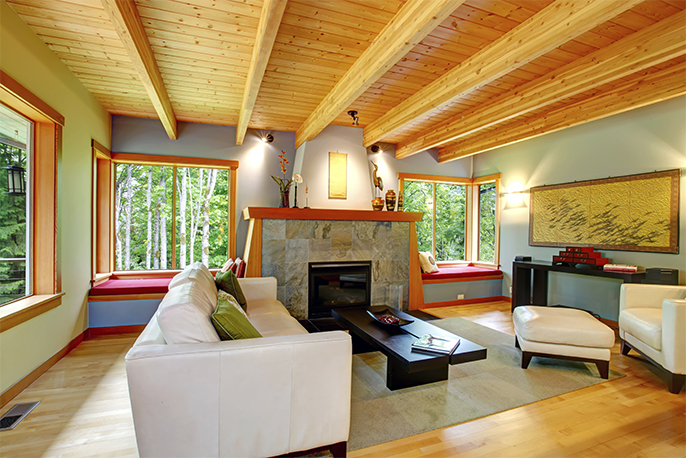
Style a home to be livable and lovely
Combining function and aesthetics will turn your house into a home.
Each room in your home is like a puzzle that you piece together to create a cohesive attractive whole. The color palette, pattern, and furniture style don’t have to be the same, though there should be some commonality so rooms flow together aesthetically.
Functionality is also important. For example, your living room should incorporate a comfortable seating arrangement rather than be a place to walk through past the fancy furnishings you reserve for guests, says Chicago designer Tom Segal of Kaufman-Segal Design. For a living room, seating should be more upright to facilitate conversation, while softer furnishings are better for a family room to encourage lounging and relaxing in front of a TV. But if the TV is at one end and a fireplace at the other, you’ll have a tough time arranging seating for intimate conversations, he says.
If you are starting with a dearth of furnishings, how fun. It can be an adventure to study design resource sites such as Remodelista, Houzz, and Pinterest, and magazine website such as Elle Décor, House Beautiful and Dwell. Print out what resonates, and you’re likely to see a pattern to your choices. Perhaps a certain blue shade keeps popping up, your eye keeps gravitating toward stripes, or those mid-century designs become a must-have.
Beware, too. When making choices yourself, it’s easy to make costly buying mistakes. If you’re a busy homeowner, you might want a live person with design credentials to do it for you and relieve you of having to make all the decisions and do all the leg work. Consider hiring an independent designer who may charge by the project, hour, or furniture piece with a mark up. That design pro will help you get the right size, proportions, and finish, and may help you avoid costly mistakes or regretful purchases. Segal and business partner David Kaufman have been called in to "fix" homeowners’ efforts. From the get-go, they know to measure and eyeball your room to make sure what you want fits and will fit in.
You have another option. Many design stores such as Pottery Barn have trained staff on hand who can design an entire room or offer one finishing touch or clever idea with no obligation to buy.
Whatever route you take, avoid buying without a vision of the whole. Set a budget, list the furnishings you think you need, get estimates, total all, scale back, and then begin. The less important items like that chaise lounge you’ve always wanted in your guest room may have to wait. Think about durability and a long–rather than short-term fix, buy good stuff that lasts. It will end up costing less over time. One tactic is to combine "high" and "low" priced items—perhaps an antique table with great provenance and a flea market find such as early 20th-century pottery. The juxtaposition allows your personality to come through so the room doesn’t look staid or staged, Segal says.
And don’t think you have to complete a room fast. Leave some "holes" for objects you may find on vacation, or heirlooms a family member shares or bequeaths to you at some point. The process should feel creative rather than exasperating.
Here’s one key caveat: The first purchase you make for any room may be the toughest. Segal has found a good way to start is to build a room from the ground up with an area rug, which helps anchor the room and becomes a major focal point. "We like to use the largest rugs a seating area can handle to add drama and interest, too," he says.
Regardless of how you proceed with your decor, your level of involvement in your project is up to you. But why miss out?
Share your decorating ideas with us.
